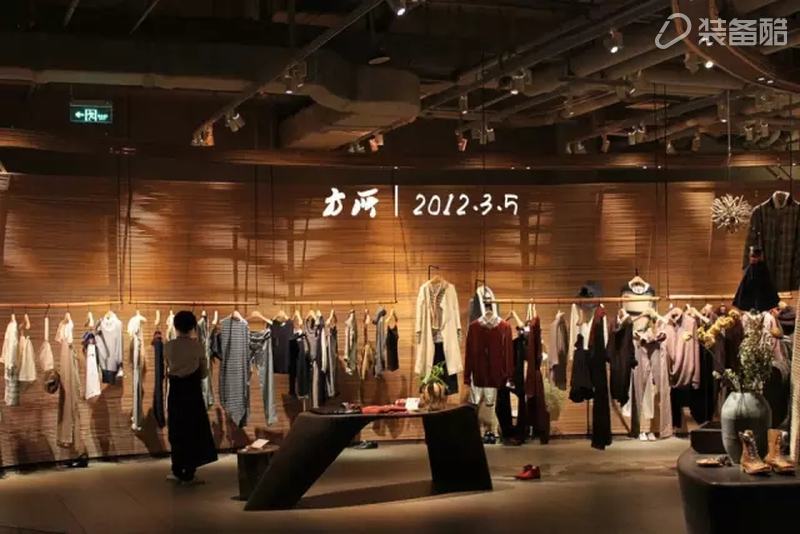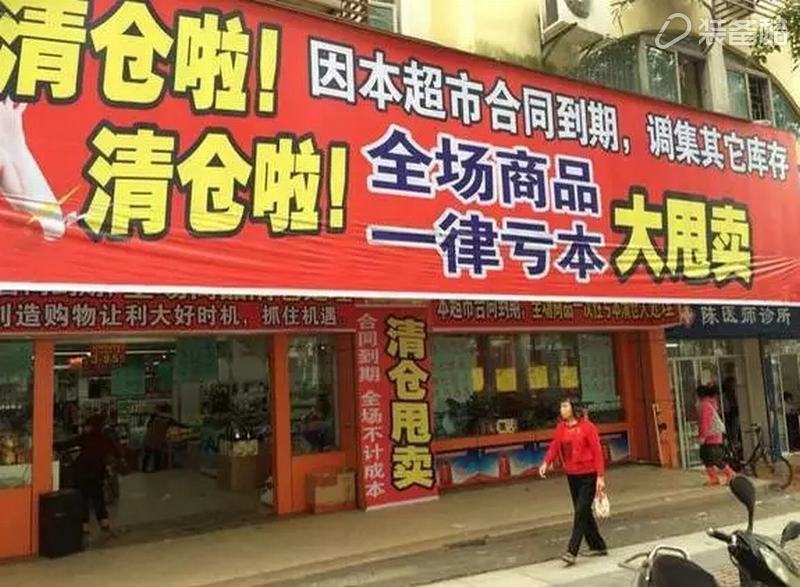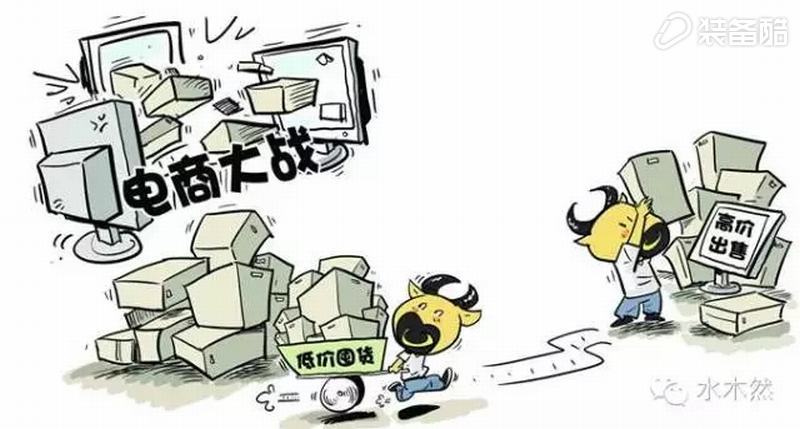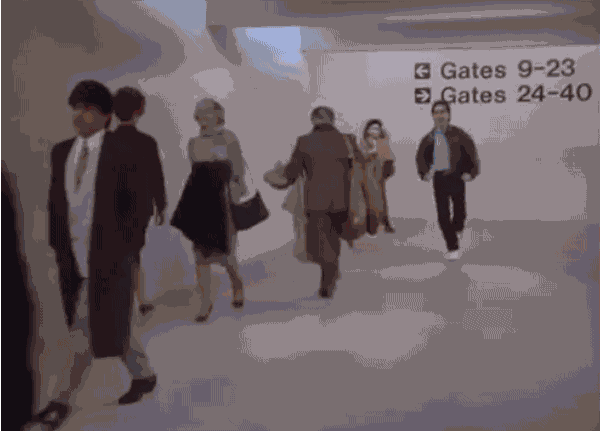The cost of e-commerce is getting higher and higher. E-commerce has developed by leaps and bounds for many years. The cost of e-commerce is now no lower than in physical stores: manual 11%, Tmall deduction 5.5%, promotion cost 15%, express delivery 12%, after-sales 2%, financial costs 2%, water and electricity rent 2%, plus tax, if there is no gross profit margin of more than 50%, e-commerce simply can not continue to operate. Whenever everything is silent, there must be a powerful new life gestating. It will lead the next round of recovery. If we now attribute the downturn of physical stores to the depression of the entire economic situation, it is obviously wrong. After 30 years of development, commercial real estate in China has become more and more serious. In 2015, the growth rate of chain top 100 sales was only 4.3%, which was the lowest point in history. Now casually walking on a street, at least half of the 10 stores have written "Selling," "Clearing," and "Special Offer". The reasons are mostly "expiration of the contract", "transfer of stores," etc. Explain that he just used the physical store as a channel. Recently, there was a boss who vowed to sell 2580 packages a month to survive. Obviously, this physical store will be eliminated sooner or later. The advantages of e-commerce are also disappearing. Now the cost of opening an “online shop†has exceeded the cost of physical stores. For example, for Taobao, the cost of attracting a customer is about 80 yuan, but the price of many products Not to 80 yuan! E-commerce is a "price" counterattack of the physical store, and now the physical store needs to use the "service" to get back an inning! Japan also had a period of physical shop decline, but after a few years of adjustment, it re-established its stability and the current China is exactly like Japan. This is the essence of "consumer upgrades": the retail industry has moved from an era of transactions to an era of relationships. Businesses can move to physical stores to create an unparalleled consumer scene, but e-commerce is done through computers. Trading with smart phones makes it difficult to provide consumers with a unique experience that they must seek to break through! Attachment: 10 major signals of physical store rise Turn one: Reproduced from: Shui Muran column Office Partition Stand,Office Divider Round Base,Office Partition Base,Office Screen Mobile Feet,Office Divider Support Stand,Office Divider Mobile Feet MGX Metalworks Co., Ltd. , https://www.mgxmetal.com
There must be great opportunities in the Great Depression. In this age full of variables, various reversals will happen at any time.
For example, in the era of the PC Internet, Taobao and Jingdong changed the lives of physical stores. However, in the era of mobile Internet, they were once reduced to traditional enterprises. Recently, there are more and more counterattacks in physical stores, such as ZARA, 7-Eleven, and the “1973 used car model†mentioned below, etc. This shows that the physical store began to quietly rise.
We must see this change. 
In fact, the real economy was not defeated by e-commerce but lost to itself. The traditional brand of a dozen, the better the online sales, the more off-line off-store. The price advantage is the key factor, so as long as you can't make the same price online or offline, the entity business will be defeated by itself. 
After six years of shuffling, physical stores have indeed reached the critical moment of life and death!
Please remember: The best business model must be born in the most outrageous era!
There is a famous philosophical saying in The Truth: "Man is the yardstick of all things. When humans exist, everything exists. When people do not exist, everything does not exist."
This shows that the only criterion for all things in the future is "humanity," and everything exists because it pleases people. The extent to which you please humans determines the value of your existence.
The same is true of commodities, and must show respect and concern for people. The essence of business is the transition from "sales and sales relations" to "service relations." This is a very amazing change, the opportunity for physical store recovery!
On the other hand, several major e-commerce platforms, whether Alibaba, Jingdong, or Amazon, have encountered bottlenecks without exception. The rise is the ceiling, and profit growth is slowing down. The market demand is almost saturated. The double 11 economy is a typical loser and earner. The price war has led China's retail industry to a non-profit era. While e-commerce is destroying the traditional economic structure, it is also swamped by itself. 
At this time, as most of the “physical stores†are unable to understand themselves clearly, the business is constantly declining, which leads to the continuous decrease in the rent of the “physical storesâ€. As a result, the "online shop" costs have continued to climb, while the "physical store" costs have been declining. The two have finally reached the same level.
Until now, both have finally reached the same starting line! Everything is zero and fair competition.
In the future, the business is competing for consumer groups born in the 80s and 90s. This group of people has no shortage of material and products. They need a kind of “caringâ€. This kind of care requires face-to-face communication and touch. reflect.
And this is exactly the biggest opportunity for a "physical store!" If you give me a stack, I must bet that the physical store will win.
Because the core commercial advantage is changing from "price" to "service", but how can "e-commerce" rival the "store" rivals? What's more, if you think about it again, when we walk on the street, if there aren’t rows of shops, what a sense of loss?
Starbucks was once counterattacked by COSTA and a dozen theme cafes, but after the design has undergone a full-scale transformation, the more theme-themed and more experienced theme store model has once again occupied the market. Let's take a look at ZARA, which is also buying clothes, but it has rejuvenated the clothing store.
The reason why many physical stores are still paralyzed is because they have not yet woken up. Has been fighting prices, fight facade advantages. In the future, those homogenized products will become less and less competitive, and only those physical stores that can provide users with unique experiences will stand out. Under this general trend, many e-commerce companies have also been forced to go offline from the line and open physical stores to provide consumers with a place to experience and make up for their shortcomings. 
This is the essence of “demand escalationâ€: Consumers need to shift from a sense of satisfaction with products to spiritual satisfaction. In the past, people moved with people. Now it is a matter of heart. At that time, the merchant's culture, innovation, experience and feelings will all make the hero useful!
Consumers are changing, culture, innovation, experience and feelings are just as important as prices. Price advantage has always been the core of e-commerce counter-attacking physical stores, but more and more middle-class families are nowadays. Internet links are global, and Chinese aunts who have brushed gold are The group began its journey abroad and consumers have long been subtle.
The most popular commercial real estate this year is the Suzhou Shin Kong Place, Suzhou Eslite and Joy City series, playing with culture, innovation, experience and feelings, this is what consumers really need now.
Turn 2:
Opening a store and opening a calf can also be the richest man, ZARA boss set off a new round of business trends this year, ZARA's boss, Amancio Otega once climbed to the top of the world's richest man. Inditex's dozen brands rely on ZARA to absorb enough gold. Telling global investors that commercial real estate retailing can still make big money, you can't just be too low for you.
Wanda Projection Institute and Children's Playground; green space for sea importing supermarkets; Fosun invests in the German fast fashion Tom Tailor and the secret of Malaysian food; fancy is China's consumption potential and future growth, and opportunities such as Amancio O'Connell Specially earned more.
Turn three:
Behind the high-volume shut-down store is the rise of a dozen new local brands. As we all know, some old brands closed 10,000 stores in 2015. However, we must know that behind the closing of the store, more emerging brands are rising.
This piece of retail, the local fast fashion hot air, UR, MJstyle in a major counterattack. The local designer brand and the emerging tidal brand are also eye-catching and continue to squeeze more market share.
This piece of catering is the year of the rise of local fast-fashion restaurants and star shops in recent years. Grandma, Xiaonanguo, Suzhehui, Pangu catering, 57-degree Xiang, and Haidilao have a chance to become Yum-like global restaurant groups.
They say that Eslite is a sirloin, but in fact, the local experience bookstores such as Fangsuo, Si Xifu, Cat's Sky City, The First See Study, Xinhua Bookstore, One-way Street, and Chinese Characters are all in deep cross-boundary sentiment.
Turn 4:
The world's most popular network operators are in the transformation of open stores Europe and the United States a few major e-commerce rising popularity of e-commerce are in the transformation of the store. Nasty Gal, ModCloth, Warby Parker, and Bonobos of the United States have all accumulated online word-of-mouth and original accumulation, and they have opened a big strategy for the development of physical experience stores. The same applies to many high street brand e-commerce companies in the UK.
Just in early November of this year, Amazon opened its first physical store in the University Village, a shopping center in Seattle, USA. It covers an area of ​​about 511 square meters and places 5000-6000 books for the first time in 20 years. It is also the general trend of popular e-commerce in the future.
Similar to Amazon, Dangdang Bookstore is expected to open this month, the first store in Changsha 1,200 square meters, plans to open 1,000 in three years. Description For e-commerce companies, online customer growth is likely to have reached a bottleneck, and if it does not fight the physical store market, it will really fall behind.
Turn 5:
The new O2O business model with the same price and weakened the competitiveness of e-commerce. The real economy was not defeated by e-commerce but lost to itself. The traditional brand of a dozen, the better the online sales, the more off-line off-store. The price advantage is the key factor, so as long as you can't make the same price online or offline, the entity business will be defeated by itself.
There are more and more successful cases of online and offline same-sale prices. Or Uniqlo, if in 2014, UNIQLO's boom in Tmall led to a dozen fast fashion stationed in Tmall, then the OTFL O2O model of the same price online and offline in 2015 will be adopted by more physical store merchants next year to promote physical retailing. Business model transformation.
Turn 6:
More international brands have entered China's major shopping malls, and the overwhelming majority of them have taken advantage of international fast fashion brands. Starting in 2002, they gradually changed the values ​​of the Chinese people and built up their reputation. A large wave struck in 0708 and gradually turned into a subversive industry. The real outbreak occurred in 11-13 years and quickly sank into second- and third-tier cities.
In recent years, high-competitive fast fashion brands have entered the market. SPAO, Forever21, TOPSHOP, A&F, and Old Navy are making efforts. Many Other Stories, Urban Outfitters, Victoria's Secrect Pink and Miss Selfridge around the world are also planning to enter the mainland market.
Turn 7:
The physical store is changing. Under fierce competition, if you don't enter the store, you will see today's Yonghui Boutique Supermarket Bravo TH, displaying the value of the face, strictly controlling the price advantage under the logistics control. , Longhu and Chia Tai are big love, has counterattack hit a dozen veteran stores.
Starbucks was once counterattacked by COSTA and a dozen theme cafes, but the change was in the moment, the design was completely transformed, and the more thematic and more experienced theme shop model was launched, gradually regaining recognition.
You won't learn, you will not only imitation and low prices. Visually measuring its mobile internet marketing, designing and displaying merchandise choices, joining modes, and the vitality of the pattern is its core competitiveness. In less than two years, 1,100 stores have been opened, and it is estimated that the revenue will exceed 5 billion this year.
Turn 8:
Not only the celebrities have opened stores, business restaurants and retail stores that have swept commercial real estate stars have risen in the commercial real estate sector. Han Han is very happy to meet you with a bookstore, Edison Chen's Tide brand JUICE, and more than 40 star venture capital stores. Is a strong rise in the mainland, has become an important shopping mall weapon.
Not just stars, many retail executives and managers choose to start their own businesses under this wave of entrepreneurship. Even young people who have just graduated from the community can raise funds to open cafes. The tide of commercial real estate business is quietly changing the competition and the rules of the game.
Turn nine:
E-commerce impacts China's real economy. Vicious competition is unfavorable nowadays. Changes are now a huge loss-making economy. Vicious competition leads to a period of no profit for China's retail industry. Production workshops squeeze out dominant industries, and e-commerce is destroying consumption and ruining shopping. With the extra consumption it brings, e-commerce disrupts the traditional business district...
This is the fault of e-commerce. It is not necessarily true. This is the general trend of global development. It is only that China has subverted more violently, and it has become more rampant. However, it is undeniable that e-commerce does have a real impact on the real economy, which everyone can feel.
Vicious competition and loss-based sales are indeed unfavorable to the rise of the real economy. The government has been dismissive and skeptical, and is now hesitating. After all, e-commerce is also an important link between the government's all the way and the globalization of Chinese style.
Business think tanks believe that since the government has gradually incorporated deeply subverted financial innovations and mobile internet payment systems into strict control over control, e-commerce is also doomed to escape, and the changes are now in place.
Turn 10:
The government has been restricting purchasing, discussing imports and further liberalizing the airspace to help domestic demand. Jiageqiang Prime Minister recently talked about the rise of the real economy when he mentioned the purchasing power. In recent years, the rapid growth of purchasing has contrasted with the slight weakness of the real economy. The scale of China’s 100 billion yuan purchases each year is not to be underestimated.
Therefore, the obvious change is that the purchasing policy is gradually tightening. The legal sanctions against the purchasing businesses are increasing more and more malicious tax evasion incidents. The next year will be more subdivided and more stringent.
At the same time, the import policy is being liberalized. Prime Minister Ke Qiang said frankly that within the next five years, China will import 10 trillion US dollars. Business think tank forecast that in order to meet the real rise of domestic demand, import policy will be further liberalized in 2016.
In the middle of this year, Chen Qizong once said that the government had promised to lower import tariffs, and that luxury business encounters cold and import tariffs. Then immediately after the LV broke out, the people were accustomed to go abroad and purchase luxury goods. So change must not be delayed.
E-commerce escape, the physical store is about to rise!